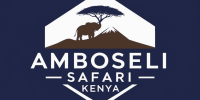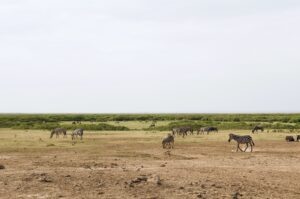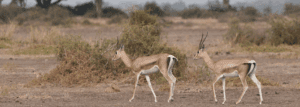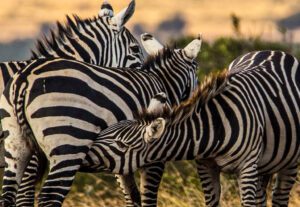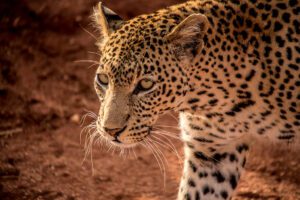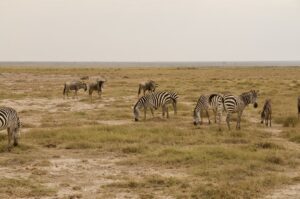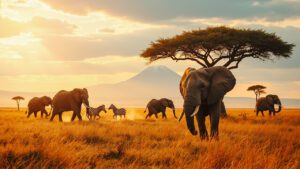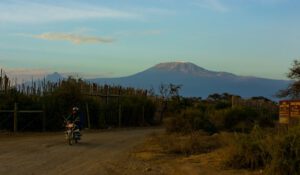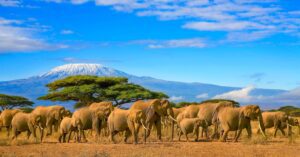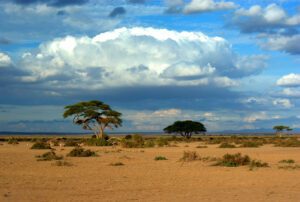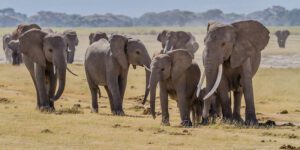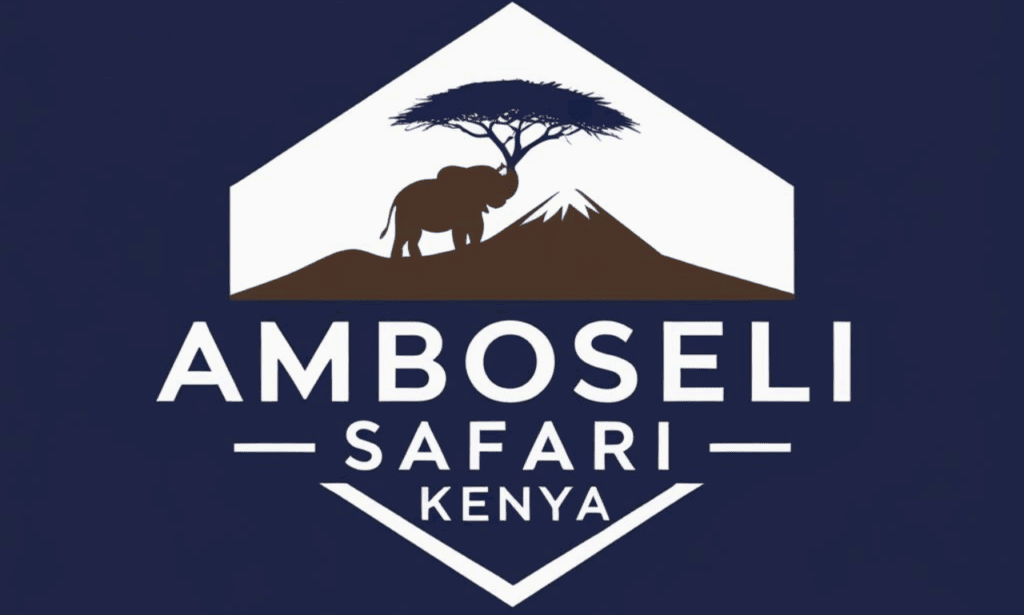What makes Kenya a prime safari destination compared to other countries?
Kenya stands out as one of the most iconic African safari destinations in the world for several exciting reasons. First, Kenya is home to incredibly diverse landscapes. Whether it’s the vast savannahs of the Maasai Mara, the snow-capped peaks of Mount Kenya, or the arid deserts and lush lakes, the variety of ecosystems supports a rich range of wildlife. This diversity ensures that every Kenya safari feels unique.
Kenya is also famous for hosting the Great Migration, where over two million animals, mainly wildebeest, zebras, and gazelles, journey across the Serengeti in Tanzania into Kenya’s Maasai Mara. Watching massive herds cross crocodile-filled rivers is a once-in-a-lifetime spectacle that makes Kenya truly special and highlights its status as a top travel destination.
In terms of wildlife, Kenya offers the “Big Five” (lion, leopard, elephant, buffalo, and rhino) and countless other animals like cheetahs, giraffes, zebras, and flamingos. The country also has well-managed national parks and reserves, such as the Maasai Mara and Amboseli National Park, which are world-famous for their safari experiences and are must-visit attractions for wildlife enthusiasts.
Additionally, Kenya stands out for its strong focus on eco-tourism. Many safari lodges and camps work to preserve wildlife and respect the local communities, giving visitors an opportunity to interact with traditions and cultures, such as those of the Maasai people. Finally, Kenya has excellent infrastructure for safaris, with high-quality accommodations, well-trained guides, and well-maintained reserves. Combined, all of these factors make Kenya a dream destination for animal lovers and adventurers.
What are the most famous national parks and reserves in Kenya for a safari?
Kenya has several prominent national parks and reserves that are must-visit safari destinations, each offering unique landscapes and wildlife.
The Maasai Mara National Reserve is undoubtedly the most famous. It’s where visitors can witness the Great Migration each year, along with large populations of lions, cheetahs, and other predators. It’s a classic destination for spotting the “Big Five” animals in one trip.
Amboseli National Park is well-known for its breathtaking views of Mount Kilimanjaro (the tallest peak in Africa) and its large herds of elephants. If you’ve ever seen photos of elephants walking in front of Mount Kilimanjaro, they were likely taken in Amboseli.
For an experience that combines wildlife and stunning birdwatching opportunities, Lake Nakuru National Park is renowned. This park has thousands of flamingos that line its shores when the conditions are right. It’s also a top spot to see endangered rhinos.
Tsavo National Parks (East and West), collectively one of the oldest and largest reserves in Kenya, offers visitors the chance to see wilderness landscapes and unique red elephants, which get their color from rolling in the park’s rust-colored soil.
Finally, Samburu National Reserve in northern Kenya is famous for unique animal species like the Grevy’s zebra, Somali ostrich, and reticulated giraffe, which you won’t typically find in southern parts of Kenya. This reserve also has fascinating cultural connections with the Samburu people.
Each park and reserve has its own personality, so whether you’re looking to photograph iconic scenes, witness rare animals, or simply enjoy the peaceful beauty of nature, Kenya’s parks have something for everyone.
What types of wildlife can be seen during a Kenyan safari?
One of the biggest draws of Kenyan safaris is the incredible variety of wildlife that can be seen in its national parks and reserves. Kenya is home to Africa’s famous Big Five animals: lions, leopards, elephants, African buffalo, and rhinoceroses. The term “Big Five” originally referred to the five most difficult animals for hunters to track, but today they’re the stars of safari photography.
In addition to the Big Five, Kenya offers many other fascinating creatures. You’ll find large herbivores like zebras, giraffes, hippos, and wildebeests roaming the savannahs. Fun fact: Wildebeests, along with zebras, are the key players in the Great Migration through areas like the Maasai Mara.
Predators are also commonly seen during safaris. These include cheetahs, which are famous for their speed, as well as hyenas, jackals, and even crocodiles, which can be seen lurking in rivers.
For birdwatchers, Kenya is a paradise. There are more than 1,000 bird species in Kenya, including spectacular ones like flamingos, crowned cranes, and ostriches. If you visit places like Lake Nakuru, you’ll be greeted by thousands of flamingos coloring the shoreline pink.
In northern reserves like Samburu, you’ll find animals unique to that region, including Grevy’s zebra, reticulated giraffe, and Somali ostriches. These species aren’t as common in other parts of the country, so Samburu is a must for explorers looking for something more unusual.
Whether you’re searching for majestic elephants, stealthy leopards, or vibrant birds, a Kenyan safari offers endless opportunities to view some of the planet’s most captivating wildlife.
What is the significance of the Great Migration, and when does it take place in Kenya?
The Great Migration is one of the most extraordinary wildlife events on Earth and a key reason why Kenya is globally famous for Kenya safaris. This remarkable event involves the annual movement of millions of wildebeest, zebras, and other animals such as gazelles through the Serengeti ecosystem in Tanzania into the Maasai Mara National Reserve in Kenya. Driven by the search for fresh grass and water, these animals follow the rains across the region, making it a highlight of any African safari experience.
The Great Migration in Kenya typically takes place from July to October, which is when the herds arrive in the Maasai Mara. This period is particularly dramatic because it includes the iconic river crossings at the Mara River. Picture this: tens of thousands of wildebeest and zebras gather at the riverbanks, hesitating for hours before fearlessly plunging into crocodile-infested waters. It’s a life-or-death race because giant Nile crocodiles lie in wait, and predators like lions wait on the other side.
This event is significant not just because of its sheer spectacle but also because it provides invaluable ecological balance. The migration ensures that nutrients are spread across ecosystems as animals graze, trample, and fertilize the land. It’s also a time when predators thrive, as the abundance of prey supports large populations of lions, cheetahs, hyenas, and other hunters.
For travelers, witnessing the Great Migration is a bucket-list experience, as it is rare to observe such a massive, wild, untamed event in nature. Imagine watching thousands of animals on the move, thundering hooves shaking the ground, or dramatic hunts unfolding right before your eyes! Kenya’s Maasai Mara is the perfect spot to witness this natural wonder, making it a premier travel destination for wildlife enthusiasts.
What are the different types of safari experiences available in Kenya?
Kenya offers a wide variety of safari experiences to cater to all types of travelers, whether you’re a luxury lover, family adventurer, or budget explorer. Here’s a breakdown of the most common safari types:
- Game Drives: This is the classic safari experience. You’ll ride in a specially designed 4×4 vehicle with a guide who helps you spot animals. Morning and evening are the best times for game drives because animals are more active when it’s cooler. For example, in the Maasai Mara, you might spot lions lounging in the morning sun or a leopard hunting at dusk.
- Walking Safaris: For a more immersive experience, walking safaris let you explore the wilderness on foot with a trained guide. These safaris are not about chasing big predators but about connecting with nature, noticing smaller animals, plants, and tracks. Some reserves, like Amboseli or Laikipia, offer amazing walking safari opportunities with armed guides to ensure safety.
- Hot Air Balloon Safaris: Want something magical? A hot air balloon safari allows you to see the landscape from above. Imagine floating over the Maasai Mara at sunrise, watching herds of animals moving below. It’s peaceful and perfect for photographers looking for a unique perspective.
- Night Safaris: Some conservancies offer night safaris, where you can see nocturnal animals like leopards, aardvarks, or bush babies that are hard to spot during the day. For example, conservancies in Laikipia or Tsavo allow nighttime adventures with specially equipped vehicles.
- Cultural Safaris: Combine a traditional safari with cultural experiences by visiting local communities like the Maasai or Samburu tribes. You can learn about their traditions, participate in dances, or visit villages. For instance, many safaris in the Amboseli National Park include cultural encounters with the Maasai people.
- Fly-In Safaris: If you’re short on time or want a deluxe experience, consider flying into remote luxury lodges or camps in places like the Maasai Mara or Lewa Wildlife Conservancy by small plane.
With all these options, Kenya truly offers something for every type of traveler, and each safari unlocks a different side of its rich landscapes and wildlife.
What cultural experiences can you have while on a Kenyan safari?
A safari in Kenya isn’t just about the animals, it’s also an opportunity to interact with the diverse cultures that call the country home. Kenya is rich in ethnic groups, with over 40 tribes, and the Maasai, Samburu, Turkana, and Kikuyu communities are some of the most well-known. Engaging with these groups during your Kenya family safaris adds depth to your trip and allows you to appreciate the history, traditions, and lifestyles of the people living alongside wildlife.
One of the most iconic cultural experiences is visiting a Maasai village. The Maasai are a semi-nomadic pastoralist community famous for their bright red attire, jumping dances, and rich warrior traditions. When you visit a Maasai village (often organized as part of a Kenya safari itinerary), you can see traditional hut-making, hear fascinating stories about their way of life, and even join in community dances and songs. Don’t be surprised if you’re invited to try their local food or learn how they herd cattle, which is central to their culture.
Another option is visiting the Samburu people in northern Kenya, whose lifestyle shares similarities with the Maasai but differs in dress, jewelry, and certain traditions. Samburu women are known for their intricate beadwork, and you might get a chance to participate in traditional crafts or ceremonies.
For an even more unusual cultural experience, you could explore Kenya’s Swahili coast, where the influence of Arab and African cultures has blended for centuries. Visit Lamu Island for a completely different cultural safari, a journey through old stone towns, mingling with local fishermen and dhow builders.
By immersing yourself in these cultural experiences, you get to appreciate Kenya as more than just an African safari destination. It highlights the balance between conserving wildlife and respecting human communities, making the safari experience richer and more meaningful.
What is the best time of year to go on safari in Kenya?
The best time to go on a safari in Kenya largely depends on what you want to see and experience. As one of the top African safari destinations, Kenya has a generally warm, tropical climate, making it a year-round travel destination. However, certain times of the year are better for specific wildlife activities, such as the Great Migration or seeing animals more easily due to dry conditions.
If witnessing the Great Migration, arguably the most famous spectacle of millions of wildebeests, zebras, and gazelles crossing between the Serengeti (Tanzania) and Maasai Mara (Kenya), is your goal, plan your visit between July and October. This is when the herds arrive at the Maasai Mara and cross the Mara River, creating a typical Mara safari scene that features dramatic survival moments as animals face crocodile-filled waters.
In terms of weather, the dry season, which runs from June to October, is considered the best time for safaris in Kenya. During this period, there is minimal rainfall, so animals gather around water holes, making them easier to spot. The grass is also shorter, enhancing visibility in the parks, which is crucial for those seeking an amazing African safari experience.
On the other hand, the wet season (November to May) has its own charm. The rains bring lush landscapes, perfect for photographers and those interested in capturing the vibrant Swahili culture. It’s also the best time for birdwatching, as migratory birds flock to Kenya. Additionally, this is the birthing season for many animals, meaning you’ll see lots of baby animals like lion cubs, gazelle fawns, and baby elephants.
In short, if you want perfect wildlife viewing and better road conditions, choose the dry season. If you’re looking for vibrant, lush scenery or better prices (since it’s off-peak), opt for the wet season, but try to avoid the heavy rains in April and May.
What accommodations are available during a safari in Kenya?
Kenya offers a variety of accommodations during a safari, catering to different styles and budgets, from luxury lodges to budget-friendly tents. What you choose depends on your comfort preferences and how close you want to get to nature. For an amazing African safari, luxury lodges provide an exceptional experience.
Luxury Safari Lodges: These high-end lodges combine modern comforts with the wild surroundings. They often have spacious rooms with ensuite bathrooms, gourmet meals, swimming pools, and even spa services. Think of it as a plush hotel in the heart of the savanna. Examples include the Giraffe Manor in Nairobi or the Mara Serena Safari Lodge in Maasai Mara. They provide both luxury and access to incredible wildlife, making them a top choice for an African safari destination.
Tented Camps: These are very popular in Kenya and come in different levels, from basic to luxury. At the higher end, “glamping” tented camps (like Angama Mara) feature large tents with full beds, private bathrooms, and electricity. Budget options offer simpler setups with cots and shared facilities but still allow you to camp under the stars and feel immersed in nature, adding to the allure of Kenya safaris.
Budget Lodges and Campsites: For travelers on a tighter budget, there are affordable lodges or campsites located near the parks. These give you a no-frills experience but still let you enjoy the beauty of Kenya’s wilderness, making them a great option for family safaris.
Mobile Camps: For those looking for a unique experience, mobile camps move with the wildlife (like during the Great Migration). While the setup may be temporary, many still offer luxury amenities like comfy beds, toilets, and even hot showers. This dynamic approach enhances the safari scene, allowing guests to witness the spectacular migration firsthand.
Eco-Lodges: These accommodations focus on sustainability and minimizing their impact on the environment. They often use solar power and eco-friendly practices while still offering a comfortable experience. A great example is Basecamp Explorer in the Maasai Mara, which reflects the region’s commitment to conservation projects.
No matter the accommodation type, safety is a priority. Lodges and camps are often located in or near national parks and are guarded by trained staff to ensure your well-being. You’ll have opportunities to enjoy the sounds and sights of the wild while knowing you’re safe and comfortable during your safari days.
How safe is it to travel to Kenya for a safari?
Traveling to Kenya for an African safari is generally safe, but it’s important to take some precautions and stay informed, as is the case with travel to any foreign country. The Kenyan government prioritizes the safety of tourists since safaris and wildlife tourism are a significant part of the economy, making Kenya a top travel destination for adventure seekers.
Safari Areas and National Parks: The safari areas and parks, like Maasai Mara, Amboseli, and Samburu, are well-secured and tourist-friendly. These regions are staffed with rangers and guides who are knowledgeable about the terrain and local wildlife. They’ll ensure your safety during game drives and while staying at lodges or camps. Animals in the parks tend to stay away from vehicles and people, but remember, the wildlife is wild. Always follow your guide’s instructions and don’t attempt to approach or feed animals.
General Safety Precautions: It’s a good idea to stay in reputable accommodations and use registered tour operators, as these are held to high standards. Pre-booking everything through a trusted operator ensures that all logistics, including transportation, are handled securely. When not in the parks, avoid venturing into unfamiliar areas without guidance. Larger cities like Nairobi and Mombasa have areas that are safer for tourists, but exercising common sense, such as avoiding flashing valuables and staying in well-known spots, is important.
Health Concerns: Kenya is in a malaria-prone zone, so travelers are advised to take antimalarial medication and use insect repellents. Drinking bottled or filtered water to avoid waterborne illnesses is also common advice. It’s also worth checking travel advisories regarding vaccinations and health precautions before visiting.
Political and Regional Safety: Kenya is generally stable, but it’s wise to stay updated on current events. Some regions near the borders with Somalia and Sudan are considered less safe due to occasional security threats, but these are far from the major tourist areas.
In summary, with proper planning, choosing reliable tour operators, and following local guidance, a safari in Kenya is very safe and is enjoyed by thousands of international visitors each year. It’s a thrilling, once-in-a-lifetime trip that allows you to connect with nature in amazing ways, particularly during events like the great wildebeest migration.
What is the cost range for a Kenyan safari, and are there options for different budgets?
The cost of a Kenyan safari can vary widely depending on factors such as the type of safari, level of luxury, duration, and season (high or low). Safaris in Kenya can generally be categorized into three tiers: budget, mid-range, and luxury.
For a budget safari, you can expect to spend about $100–$200 per person, per day. These safaris often involve small group tours, camping (or simple lodges), and shared vehicles to reduce costs. For example, you might stay in a tent or a basic accommodation in a place like Maasai Mara, with meals, transport, and game drives included. Budget safaris are great for backpackers and adventurous travelers who don’t mind forgoing some creature comforts.
Mid-range safaris typically cost between $300–$500 per person, per day. At this level, travelers can expect private or semi-private vehicles, better accommodations (e.g., lodges or permanent tented camps with en-suite bathrooms), and more personalized service. For instance, you might stay in a comfortable lodge with good meals and amenities like a pool, while still going on daily game drives.
For a luxury safari, prices range from $600 to as much as $2,000+ per person, per day. Travelers here experience world-class lodges, exclusive private conservancies, highly knowledgeable guides, private vehicles, gourmet meals, and even extras like hot-air balloon rides. For example, a luxury safari in Amboseli may involve staying at a high-end lodge with views of Mt. Kilimanjaro and enjoying spa treatments after your game drive.
Additionally, safaris in the high season (June to October) tend to be more expensive than in the low season (March to May), because of the Great Migration and good wildlife viewing weather. It’s worth mentioning that packages can often be customized, which means there’s room for travelers to choose a safari that fits their budget.
In short, whether you’re backpacking or looking for five-star luxury, Kenya has options for every traveler.
What should travelers know about transportation and getting around in Kenya during a safari?
Traveling around Kenya during a safari typically involves a mix of road and air transport, depending on your budget, preferences, and the distance between safari destinations. It is important to plan ahead and understand the logistics to ensure a smooth trip.
For shorter distances or budget-friendly safaris, most people will travel by road. Safari vehicles are usually sturdy, like 4×4 Land Cruisers or safari vans, with raised roofs for game viewing and photography. These vehicles are built to handle the sometimes rough and bumpy conditions of Kenya’s dirt roads, especially in national parks like Maasai Mara or Amboseli. However, road trips within Kenya often take time due to the country’s vast size. For example, driving from Nairobi to Maasai Mara can take 5–6 hours. It’s a great way to see the scenery and get a sense of the countryside, but it can be tiring.
For those looking to save time or seeking a more convenient option, internal flights are a popular choice. Kenya has a well-established network of domestic flights operated by companies like Air Kenya and Safarilink. These small planes can fly directly to airstrips near major game reserves, such as the Maasai Mara or Samburu. While flights are faster and save you long hours on the road, they are more expensive – usually $150–$300 one-way, depending on the destination.
When in reserves or national parks, game drives are the primary mode of transport. Your guide/driver will coordinate these and expertly navigate the park’s roads to give you the best chance of spotting wildlife. Vehicles often come equipped with charging ports for cameras and sometimes even coolers for beverages.
Lastly, transportation safety is generally good, but always confirm that your operator is licensed and reputable to avoid poorly maintained vehicles. Overall, whether you prefer to travel by road or air, getting around on a safari can be an adventure in itself!
What preparations are necessary for a Kenyan safari, including vaccinations, packing, and permits?
Preparing for a Kenyan safari is key to ensuring a safe and enjoyable experience. Key preparations include health, packing, and required documentation.
Vaccinations and Health: Before traveling, consult a doctor to ensure you’re up-to-date on recommended vaccinations. Common vaccines include those for yellow fever (required for entry if traveling from a country with a risk of yellow fever), typhoid, hepatitis A and B, and tetanus. Malaria is a concern in Kenya, so you’ll likely be advised to take anti-malaria medication and use insect repellent. Carry a small first-aid kit that includes basic supplies like pain relievers, band-aids, and anti-allergy creams.
Packing Essentials: Pack light, versatile clothing suitable for Kenya’s climate. Neutral-colored clothing (like khaki, beige, or olive green) is ideal for blending into the natural surroundings. Avoid bright colors as they can scare animals. Layering is key: bring light clothes for the day, as temperatures can get hot, and a jacket for early mornings and evenings when it can be chilly, especially in places like the Maasai Mara. Essentials like sunscreen, a hat, sturdy walking shoes, and binoculars will enhance your experience. Don’t forget a good camera with extra batteries and memory cards! Many lodges have limited electricity, so portable chargers are helpful.
Permits and Documentation: A tourist visa is required for most international travelers to Kenya, and you can apply for one online (eVisa). It costs around $50 and is usually valid for 90 days. If you’re flying into Kenya, you’ll need a valid passport with at least six months of validity. Additionally, some reserves and parks may require entrance permits, which are often included in your safari package costs. For example, the entrance fee for Maasai Mara National Reserve is about $70–$80 per adult, per day.
